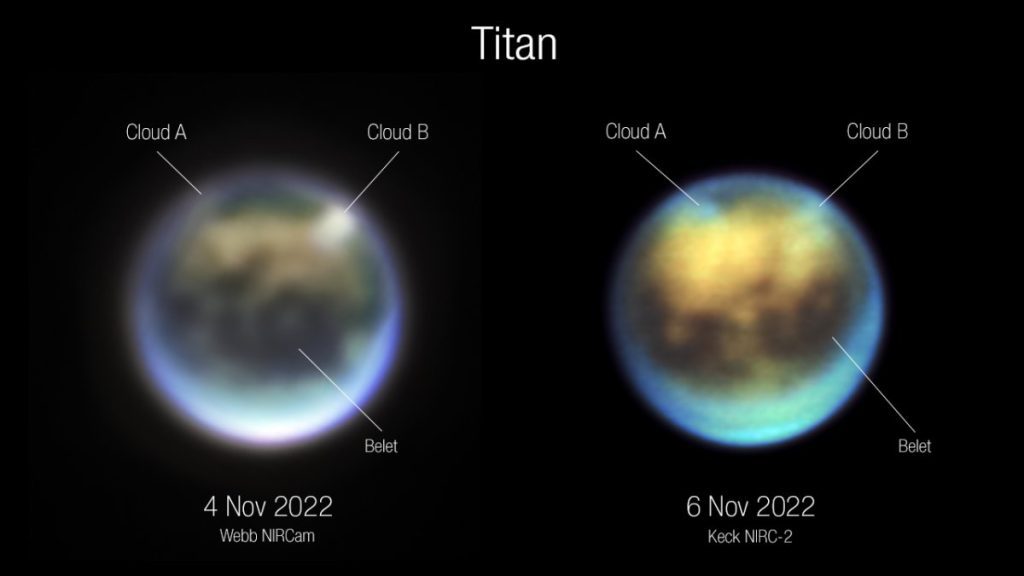The James Webb Space Telescope has now also taken the first great image of Saturn’s moon Titan and appears to directly show two huge clouds, which were found at other locations two days later by the Keck Observatory. NASA has now made this and its associated images public. The analysis has not been verified or published in a specialized journal, but it appears that the US space agency wants to share the researchers’ enthusiasm with the world. The images were taken at the beginning of November, and more observations are scheduled for early next summer.
Effective cooperation between observatories
Also mentions NASA for publicationTitan is the only moon in the solar system with a dense atmosphere. It is also the only celestial body apart from Earth that contains rivers, lakes, and seas. But they consist of liquid hydrocarbons such as methane and ethane. They form a cycle similar to the water cycle here on Earth. At the same time, the dense atmosphere blocks visible light, making observations difficult. People have waited years for the new space telescope’s infrared instruments to hack through and observe remarkable weather patterns. The co-researchers were “quite excited” about the first results.
By comparing various images taken by the space telescope with the NIRCam instrument, it was quickly confirmed that the bright spot on it must be a cloud. Then they discovered the second. They soon came to the conclusion that one must see if the clouds are moving. To do so, they contacted officials at the Keck Observatory in Hawaii and requested an observation time.
Just two days after the space telescope image was taken, the follow-up image was taken and it was already detected that the two clouds had moved. While these spectral analyzes have now been announced, the spectral analyzes are still being analyzed. The goal of the research is, among other things, to find out why Titan is the only moon with a dense atmosphere.
productive tool
The James Webb Space Telescope is operated by the space agencies NASA, ESA, and CSA and was launched on December 25, 2021. After a complex procedure of self-detection, it reached the L2 Lagrange point a month later. Here he looks away from the Sun, Earth and Moon into space so that their heat radiation does not disturb the infrared telescope. A huge protective screen prevents them. Since the scientific work began at the beginning of July, the quality of the data has not only astonished the research community.
Read also
(mo)

“Total coffee aficionado. Travel buff. Music ninja. Bacon nerd. Beeraholic.”








More Stories
Coral Seeding: Artificial Insemination Makes Coral More Heat Tolerant
Fear, Anger, and Denial: How People Respond to Climate Change – Research
LKH Graz: Using radiation to combat heart arrhythmias